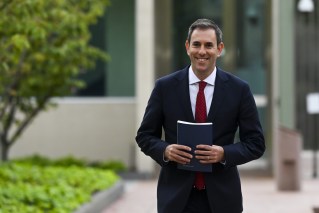New ground: Time may be ripe to brew a fresh industry in SEQ
The beans for your next cup of coffee could come from southeast Queensland, as the region grinds its way to being a prime production zone for the highly-valued crop.


Prevailing wisdom suggests coffee grows best 10 degrees either side of the equator at high altitude, an area known globally as the ‘bean belt’.
As global weather patterns change, coffee could find a natural home much further south than ever thought possible.
Prevailing wisdom suggests coffee grows best 10 degrees either side of the equator at high altitude, an area known globally as the ‘bean belt’.
Former Growcom chairman Paul Ziebarth, who has planted 1000 coffee trees at Glasshouse with his partner Lisa Palu, says that view is a myth.
“It’s an artefact of history – it doesn’t mean it’s necessarily the best place to grow it,” he said.
“We really have colonialism to blame. As coffee beans were transported around the world in the 16th and 17th centuries by the French and Dutch and the English to some degree, that determined where coffee was grown due to the availability of slave labour.
“So, this idea that coffee needs altitude to have any sort of quality and that lower latitudes and lower elevation such as Australia will produce an inferior bean, is just bullshit, in my opinion.”
It is a commonly held view that of all the coffee consumed in Australia, only one per cent comes from locally grown beans.
Ziebarth and Palu are part of a small but growing number of small-scale farmers who believe they can build a thriving, sustainable business off modest parcels of land, supplying a product in high demand.
They anticipate their trees will be ready to harvest in 2024, when the berries will be processed at their own on-farm facility and sold directly to the public through their own café on site.
Their ambitions are in contrast to dire predictions that by 2050 climate change could kill off the two main coffee varieties we drink daily – Arabica and Robusta – while also jeopardising 60 per cent of the planet’s 124 wild coffee plants.
University of Queensland Professor for Innovation and Agriculture, Robert Henry, is in the camp that believes coffee grows best at high altitudes, where there is ideal sunlight and cooler temperatures.
But with climate changing, those temperatures are getting hotter, forcing growers to search deeper into the mountains on ground that is rarefied in every sense of the word.
“It’s getting warmer and as we move to higher and higher altitudes we eventually get to the top of the mountain and there’s nowhere left to go,” Henry told UQ’s Research News recently.
Henry and his team are currently experimenting with coffee growth in Australia and in air-conditioned environments, as part of an Australian Research Council grant he was awarded in 2014.
What they have found is that Australia has a unique premium product, but the team needs investors to further refine their research.
He said the Atherton Tablelands was best suited to coffee growing in Australia, with growers also having luck in northern New South Wales.
“These are places with plenty of light where it’s not too hot. The Atherton Tablelands are where our best production is now and they’re on the right track,” he said.
“There’s been coffee production in northern NSW, in places like the Alstonville Plateau. It’s a little bit elevated, a little bit cooler and sub-tropical. The quality there has been better than people have thought, being so far from the equator.”
But Ziebarth is adamant southeast Queensland can be added to Australia’s list of coffee hot spots.
“The climate that southeast Queensland and northern NSW have is similar to the climate you would experience at 1200 metres altitude on the equator where coffee is grown between 850 metres and 1800 metres above sea level,” he said.
“Our paddocks are equivalent to 1200 metres so we’re right in the middle of that sweet spot.
“We’ve basically swapped altitude for latitude and the end result will be very pleasing for coffee drinkers.”









